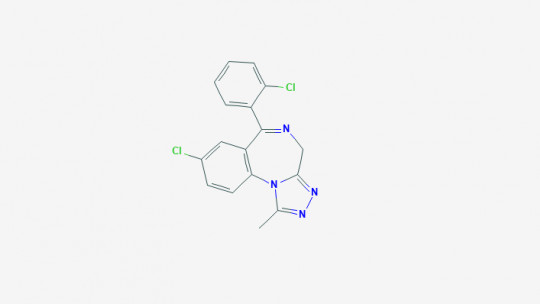
Numerous media outlets have reported the growing use and abuse that occurs in our society of psychotropic drugs Benzodiazepines are one of the most used medications to deal with anxiety disorders, fulfilling a supportive function in many psychological treatments.
However, all that glitters is not gold: it has been documented that benzodiazepines can lead to physical and psychological dependence in the person (leading to overdose), excessive drowsiness and even depressive symptoms, interfering in the daily life of the consumer. .
Flumazenil, protagonist of this article is the medication responsible for combating the drowsiness caused by benzodiazepines in very specific situations.
What is Flumazenil?
Flumazenil (trade names: Anexate, Lanexat, Mazicon, Romazicon) is a drug that works as a GABA antagonist It is responsible for blocking, through competitive inhibition, the effects produced by benzodiazepines in our Central Nervous System. At the moment it is the only benzodiazepine receptor antagonist available on the pharmaceutical market.
Two basic properties are attributed to this drug, as we will see. On the one hand, reverses sedation produced by benzodiazepines On the other hand, it helps reduce psychomotor slowness.
Uses of Flumazenil
Flumazenil is used in adults to correct the sedative effects of benzodiazepines. It can be used in two main situations: anesthesia and palliative care
In anesthesia, it is used to end the hypnosedative effects of general anesthesia maintained or induced in hospitalized patients. It is also used for the reduction and correction of sedation due to the use of benzodiazepines in diagnostic or therapeutic procedures on an outpatient or hospital basis.
In intensive care, we look for restore spontaneous breathing of the patient, correcting the central effects of benzodiazepines. In addition, it is also used for the diagnosis and treatment of overdoses or poisonings resulting from benzodiazepine abuse.
Aside from these uses, there is evidence that flumazenil could be effective in treating prolonged benzodiazepine withdrawal with quite promising results, as well as to reduce tolerance to benzodiazepines, although more studies are necessary in this regard.
In addition, it has been used to treat hepatic encephalopathy, although in this case the results have been contradictory and not so promising.
Its use is not suitable for the pediatric population, only for children over 1 year of age.
Method of administration and dosage
This medication can only be administered intravenously, so It can only be applied by a professional person in the health field Flumazenil can be given as an injection or infusion, and may be used in parallel with other resuscitation techniques.
Regarding the dose, we will only focus on the adult population. In cases where the person has been anesthetized, the recommended dose is 0.2 milligrams, administered intravenously, over approximately 15 seconds. In cases where the required degree of consciousness has not been obtained, an additional dose of 0.1 mg may be injected. In general terms, The usual dose required in these cases fluctuates between 0.3-0.6 mg
The dose is different in intensive care. It starts with a dose of 0.3 mg intravenously; if the required degree of consciousness is not obtained within 60 seconds a dose of 0.1 mg can be applied, up to a maximum dose of 2.0 mg.
It could be that the person did not regain the desired level of consciousness and that their breathing was not stable after the administration of the doses. In these cases, it should be taken into consideration that the poisoning may not be caused by the consumption of benzodiazepines.
Side effects
As happens in the vast majority of marketed medications, a series of adverse reactions can occur, which we will detail below. However, many adverse reactions usually disappear quickly or progressively without the need for special intervention.
Very common
Frequent
Hypotension.
Nausea and vomiting Sweating. Fatigue. Pain in the injection area.
Uncommon
Warnings and precautions
Before using flumazenil, a series of precautions should be taken into account.
Flumazenil has a shorter duration of action than benzodiazepines, so it is recommended that the patient be monitored in the intensive care unit until the effect of flumazenil is assumed to have worn off.
The use of flumazenil is not always the best option. For example, in patients with heart problems, it is not always a good alternative for the patient to wake up quickly from anesthesia. In these cases, maintaining a certain degree of sedation may be preferable.
After major surgery, it is important to keep in mind that the patient will be sore postoperatively. Therefore it may be preferable to keep the patient lightly sedated.
Special consideration must be taken in the dosage of flumazenil in people with preoperative anxiety or those who have a history of anxiety disorders.
The use of flumazenil is not recommended in patients with epilepsy who have previously received treatment with benzodiazepines for a prolonged period.
In the case of people treated for prolonged periods with high doses of benzodiazepines, the advantages of using flumazenil must be carefully weighed against the risk of triggering withdrawal symptoms.
Flumazenil should be used with caution in patients suffering from alcoholism due to increased tolerance and dependence on benzodiazepines in this population.
Contraindications
When should flumazenil not be administered? Its use is not recommended in patients with known hypersensitivity to flumazenil or benzodiazepines. According to experts, it should also not be used in patients who have been administered a benzodiazepine to control a life-threatening condition (eg, intracranial pressure).








